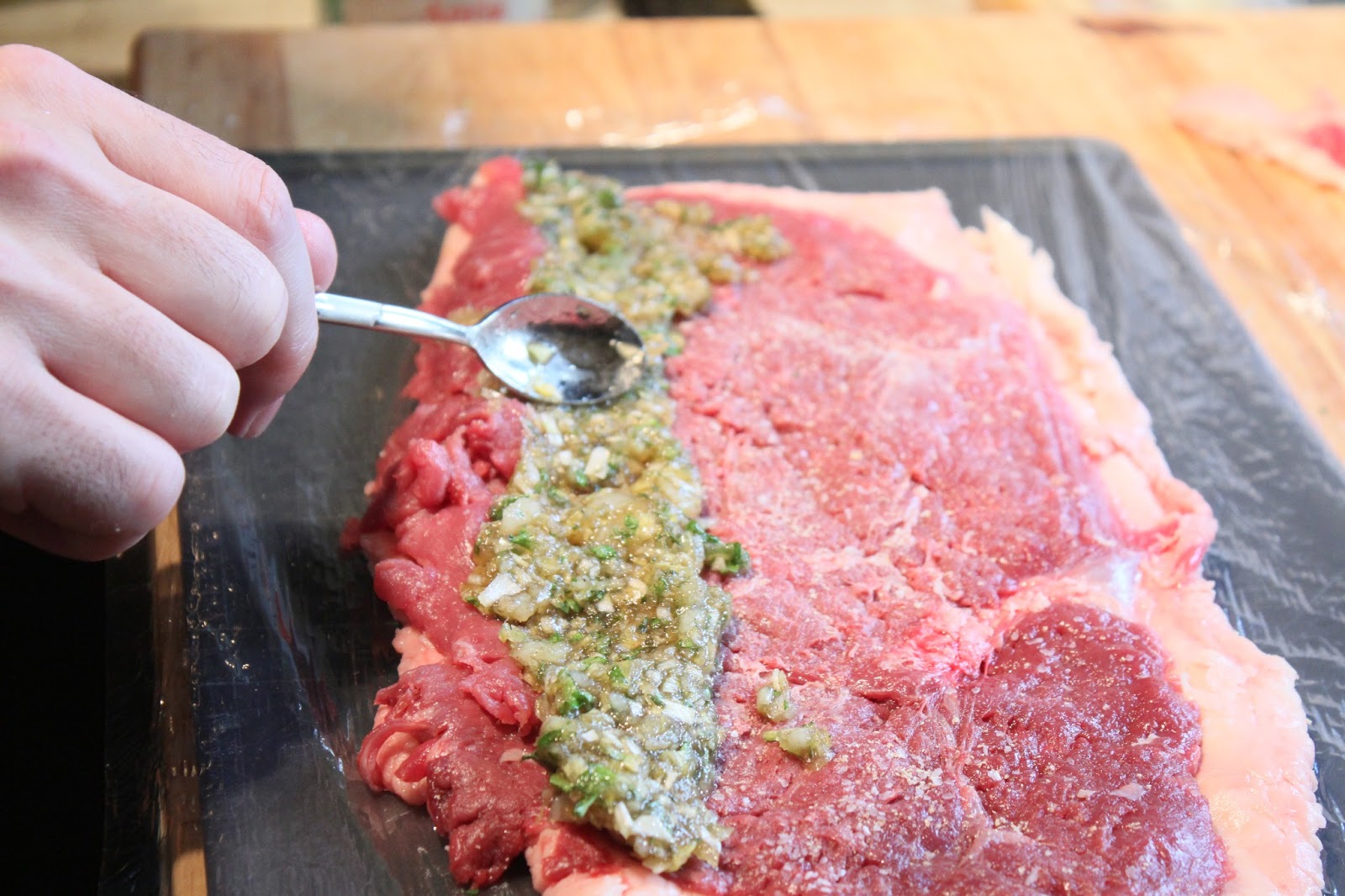My counterpart has been binding meat for about a year now and is getting fairly good at it. For this Sunday's dinner, he decided to try a specific meat-binding technique - the Roulade.
A roulade is a French dish in which a flat piece of meat is rolled around a filling and then bound and roasted. We had just received a shipment of duck from D'Artagnan so we decided on one of their Moulard duck breasts for tonight's meal.
Gareth wrapped his meat board in plastic wrap, then flattened out a completely thawed duck breast using a meat tenderizing mallot until it was about 1/4 inch thick. He seasoned it with salt and pepper on both sides.


Duck is a dark, fatty meat with a strong irony flavor that usually pairs well with something sweet. As my counterpart created a champagne reduction for New Year's that we needed up not using, we used that as the base for the filling. (NOTE: the champagne reduction consists of a half magnum of champagne slowly simmered in a bain marie until it has been reduced down to about half a cup. A generous tablespoon of butter and some raw sugar were added and blended in until melted. It's been in a glass jar in the fridge for the last week or so.) Gareth set up a simple bain marie using a heavy pot and a large metal mixing bowl. He then cooked some chopped leek, lemon zest, and fresh thyme in a couple of spoonfuls of the reduction. Once the leek was cooked and the reduction melted, he added a trace amount of cooked potato to serve as a binder.

This was spread on the flattened duck breast. Then, to help further bind the filling, Gareth sprinkled a little potato starch over the filling, the thought being that as the meat cooks and releases its juices, the juices will mix with the potato starch and help thicken the filling just like it does with a fruit pie.


He then very carefully rolled up the duck, using the plastic wrap as a guide the way you would use waxed paper to help roll up pinwheel cookie dough. He then wrapped up his roulade in the plastic wrap, tied the ends, and placed it in the freezer to set - about 20-30 minutes.



Now most of us do not bind meat on a regular basis, so while your roulade is setting, you have an opportunity to practice your approach. Gareth used a roll of paper towels as it approximated the size and shape of our roulade.
Then, he pulled the meat out of the freezer and did it for real. He used one of those lovely Russian sack towels we got at Cook's Corner in Green Bay as his working surface. He then used a slip know and loop to wrap the twine around the meat. He then wove the twine back under those loops, creating a netting that encased the entire roulade.









At this point, you can braise your roulade on the stovetop. We have done this with bound meats in the past but omitted this step tonight. He roasted it at 425 until it was cooked nearly through. He then used a kitchen shears and a small tings to gently cut and remove the binding.


While the meat was cooking, Gareth made a savory sauce out of lamb drippings, flour, and champagne. He curt the sweet grape of the champagne with heavy cream and more leek and thyme, creating a brown sauce with that distinctive champagne flavor but none of the sticky sweetness.
The meal was rounded out with some steamed asparagus.


So this was pretty okay, but I would certainly do some things differently the next time. I would use less filling in the middle, the filling would contain more potato, I would braise the loaf before baking and I would dust the outside with potato starch.
ReplyDeleteMagnifique, Mary. Merci beaucoup
ReplyDelete